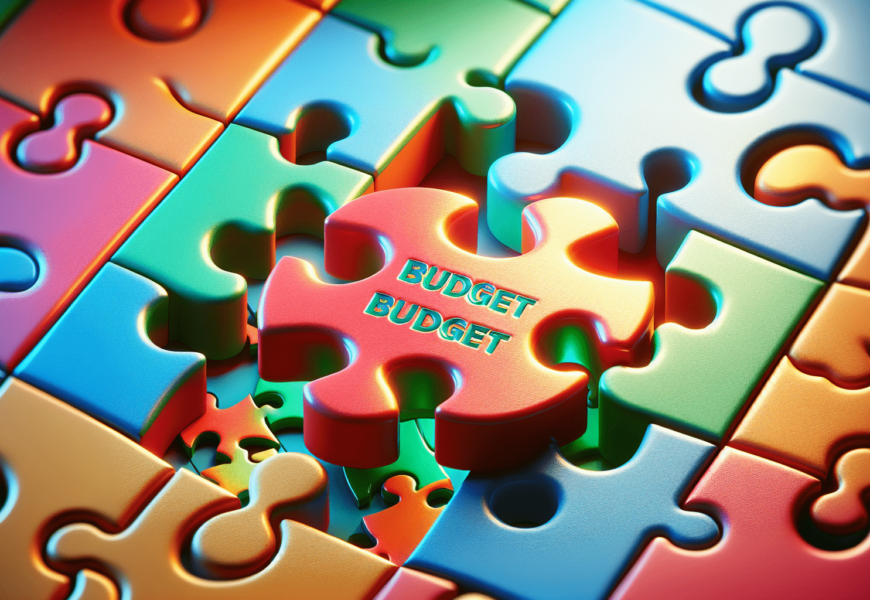Are you tired of exceeding project budgets? Look no further! This article will provide you with the best practices for creating and managing project budgets. By following these simple steps, you will be able to effectively plan and allocate resources, track expenses, and prevent budget overruns. Say goodbye to financial stress and hello to successful project management!
Understanding the Importance of Budgeting
The role and purpose of a project budget
When it comes to managing a project, an effective budget plays a crucial role in ensuring its success. A project budget serves as a financial roadmap, providing a clear outline of the expected costs and resources required to complete the project successfully. It helps in making informed decisions, allocating resources efficiently, and tracking the financial health of the project throughout its lifecycle.
A project budget serves as a vital tool for project managers and stakeholders to understand the financial implications of their decisions and prioritize accordingly. It helps to prevent overspending, manage expenses, identify potential risks, and ensure the project stays on track financially.
The impact of budget management on project success
Budget management is a critical aspect of project success. A well-managed project budget ensures that resources are allocated efficiently, costs are controlled, and the project remains financially stable. It allows project managers to make informed decisions, adapt to changes, and mitigate risks effectively.
Proper budget management also enables effective communication and collaboration among project stakeholders. When everyone involved in the project understands the budget constraints and limitations, they can work collaboratively to optimize resources and achieve project goals within the allocated budget.
By effectively managing the project budget, you can improve overall project performance, increase stakeholder satisfaction, and maximize the return on investment.
Initializing the Budget Planning Process
Gather historical data and perform a cost-benefit analysis
To create an accurate and realistic project budget, it is essential to gather historical data from similar projects or past experiences. Analyzing this data will provide insights into the cost and resource requirements for similar projects, helping you estimate the budget more accurately.
Performing a cost-benefit analysis is another crucial step in the budget planning process. This analysis helps you weigh the potential costs and benefits of the project, enabling you to make informed decisions about resource allocation and prioritization. By understanding the potential return on investment, you can justify the budget requirements to stakeholders with confidence.
Identify budget constraints and limitations
Before finalizing the project budget, it is essential to identify and address any budget constraints and limitations. These constraints can include limitations on overall budget size, specific allocation restrictions, or financial guidelines set by stakeholders or the organization.
Identifying these constraints upfront will help you set realistic expectations and work within the available budget. It also ensures that you align the project goals with the financial limitations, avoiding any potential conflicts or misunderstandings later in the project.
Setting realistic financial goals for your project
When creating a project budget, it is important to set realistic financial goals that align with the overall project objectives. These goals should be specific, measurable, achievable, relevant, and time-bound (SMART), to ensure that they can be effectively managed within the allocated budget.
Setting realistic financial goals enables the project team to focus their efforts and resources on what truly matters. It helps in prioritizing tasks, making informed decisions, and avoiding unnecessary expenditures. By setting clear financial goals for your project, you can improve budget management and increase the chances of project success.
Creating a Detailed Project Scope
Defining project objectives and deliverables
Creating a detailed project scope involves defining the objectives and deliverables that the project intends to achieve. This step is crucial as it provides a clear understanding of what needs to be accomplished and helps in estimating the associated costs accurately.
By clearly defining project objectives and deliverables, you can ensure that the budget is allocated strategically, focusing on the tasks and activities that contribute directly to achieving those objectives. It helps in avoiding scope creep and unnecessary expenses.
Identifying key project needs and requirements
To create an accurate budget, it is important to identify and understand the key needs and requirements of the project. This includes identifying the necessary resources, materials, equipment, and services that are essential for successful project completion.
By identifying these key project needs and requirements, you can estimate the associated costs more accurately and ensure that the budget covers all the necessary expenses. It also helps in avoiding any surprises or budget shortfalls during the project execution phase.
Detailing project phases and tasks
A detailed project scope should include a breakdown of project phases and tasks. This breakdown helps in estimating the time and effort required for each task, which in turn contributes to estimating the associated costs accurately.
By detailing the project phases and tasks, you can identify the critical activities and milestones that require special attention and budget allocation. It also helps in identifying dependencies and potential risks, allowing you to plan and allocate resources accordingly.
Estimating Costs Accurately
Identifying cost drivers and influencers
To estimate costs accurately, it is important to identify the key cost drivers and influencers that impact the project budget. Cost drivers can include factors such as labor, materials, equipment, overhead expenses, and external services.
By identifying these cost drivers, you can focus on understanding their impact on the project budget and allocating resources accordingly. It helps in prioritizing resources and controlling costs effectively.
Tools and techniques for accurate cost estimation
There are several tools and techniques available for accurate cost estimation in project budgeting. Some commonly used techniques include bottom-up estimating, analog estimating, parametric estimating, and three-point estimating.
Bottom-up estimating involves estimating the costs of each individual task or component of the project and then aggregating them to obtain the total project cost. Analog estimating involves using historical data and benchmarks from similar projects to estimate costs. Parametric estimating involves using statistical models and formulas to estimate costs based on variables such as project size, complexity, and duration. Three-point estimating involves estimating the best-case, worst-case, and most likely scenarios to calculate a more accurate cost estimate.
By utilizing these tools and techniques, you can improve the accuracy of your cost estimation, reducing the chances of budget overruns or underestimation.
Allocating costs across different project phases and tasks
When estimating costs, it is important to allocate the budget strategically across different project phases and tasks. This involves estimating the costs for each phase and task separately, considering their individual requirements and dependencies.
By allocating costs appropriately, you can ensure that the budget aligns with the project scope and objectives. It also helps in identifying potential cost savings opportunities and prioritizing resource allocation based on the criticality of each phase and task.
Booking and Tracking Costs
Establishing a system for tracking expenses
Once the project budget is finalized, it is crucial to establish a robust system for tracking expenses throughout the project lifecycle. This system should allow you to capture and record all project-related expenses accurately.
Establishing a reliable expense tracking system helps in monitoring the project’s financial health and identifying any potential deviations from the budget. It ensures that all expenses are captured in real-time, providing you with up-to-date information on the project’s financial status.
Regularly updating and maintaining your budget document
As the project progresses, it is important to regularly update and maintain the budget document to reflect any changes or deviations from the original plan. This includes recording any additional expenses, adjustments, or changes in resource allocation.
Regularly updating the budget document helps in maintaining transparency and accountability in budget management. It allows you to track the actual expenses against the budgeted amounts, identify any variances, and take corrective actions if necessary.
Dealing with unexpected costs or overruns
In any project, unexpected costs or budget overruns can occur. When faced with such situations, it is important to address them proactively and make necessary adjustments to the budget. This involves analyzing the reasons behind the overruns, identifying potential cost-saving measures, and reallocating resources if needed.
By promptly addressing unexpected costs or overruns, you can minimize the impact on the overall project budget and prevent further deviations. It also helps in maintaining stakeholder confidence and trust by demonstrating proactive budget management.
Risk Identification and Contingency Planning
Recognizing potential budget risks
To effectively manage the project budget, it is essential to recognize potential budget risks and uncertainties that may impact the project’s financial health. These risks can include changes in scope, resource availability, market conditions, or unforeseen events.
By identifying potential budget risks upfront, you can proactively plan for them and develop contingency measures. This helps in minimizing the impact of such risks and ensures that the project remains financially stable.
Creating a budget risk management plan
Creating a budget risk management plan involves developing strategies and actions to mitigate identified risks and uncertainties. This plan should outline specific steps to be taken in case the budget is impacted by any of the identified risks.
By having a well-defined budget risk management plan, you can respond effectively to budget deviations and ensure that the project remains financially viable. It helps in minimizing the potential negative impact on project timelines, quality, and overall success.
Setting up a contingency reserve for unexpected costs
To account for unexpected costs or budget overruns, it is advisable to set up a contingency reserve within the project budget. This reserve should be allocated for unforeseen expenses that may arise during the project execution phase.
Setting up a contingency reserve helps in managing unexpected costs without impacting the overall project budget. It provides a cushion to absorb any unforeseen expenses, ensuring that the project remains financially stable and can continue without significant disruptions.
Involving Stakeholders in the Budget Process
The importance of open communication regarding the budget
Open communication regarding the budget is critical to the success of any project. By involving stakeholders in the budget process and maintaining transparent communication channels, you can ensure that everyone understands the financial constraints and limitations.
Open communication helps in setting clear expectations, avoiding misunderstandings, and building stakeholder trust and confidence. It also allows stakeholders to provide valuable insights, suggestions, and feedback, which can contribute to better budget management and decision-making.
Involving stakeholders in the budget creation and approval process
Involving stakeholders in the budget creation and approval process promotes a sense of ownership and accountability. When stakeholders are actively involved, they gain a better understanding of the project’s financial requirements, constraints, and potential outcomes.
By involving stakeholders in the budget process, you can benefit from their expertise, perspectives, and contributions. It also helps in ensuring that the budget reflects the collective interests and priorities of all stakeholders, minimizing the chances of conflicts or resistance.
Handling stakeholder requests or changes
During the project lifecycle, stakeholders may request changes or modifications to the budget. It is important to handle these requests effectively and evaluate their impact on the overall project goals, budget, and timeline.
When dealing with stakeholder requests or changes, it is crucial to analyze their feasibility, cost implications, and alignment with the project objectives. Open and transparent communication with stakeholders is essential in explaining the impact and potential consequences of the requested changes.
By handling stakeholder requests or changes proactively and keeping stakeholders informed, you can maintain a collaborative and constructive environment, promoting successful budget management and overall project success.
Reporting and Evaluating Budget Performance
Periodic budget performance reviews
Periodic budget performance reviews are essential to evaluate the financial health of the project and identify any deviations or variances from the planned budget. These reviews should occur at predefined intervals and involve a thorough analysis of the budget performance.
During budget performance reviews, you should compare the actual expenses against the budgeted amounts, identify any variances, and investigate the reasons behind them. This analysis helps in understanding the project’s financial performance, identifying areas for improvement, and taking corrective actions if necessary.
Key metrics for evaluating budget performance
To evaluate budget performance effectively, certain key metrics can be utilized. Commonly used metrics include budget variance, return on investment (ROI), cost performance index (CPI), and earned value.
Budget variance involves comparing the actual expenses against the budgeted amounts to determine the differences or variances. ROI helps in assessing the financial return generated by the project in relation to the invested resources. CPI measures the cost efficiency of the project by comparing the earned value against the actual costs. Earned value integrates time, cost, and performance metrics to provide a comprehensive view of the project’s progress and financial performance.
By tracking these key metrics, you can evaluate the project’s financial performance objectively and make informed decisions regarding budget management and resource allocation.
Using budget reports for decision-making and future planning
Budget reports provide valuable insights and information that can be used for decision-making and future planning. These reports summarize the project’s financial performance, identify trends, and highlight areas that require attention.
By utilizing budget reports, you can identify areas of improvement, adjust resource allocation, and make informed decisions to optimize project performance. These reports also serve as a valuable reference for future projects, providing lessons learned and best practices for budget management.
Optimizing the Budget Over Time
Continuous improvement in budget management
Optimizing the budget over time requires a commitment to continuous improvement in budget management practices. This involves analyzing the lessons learned from previous projects, identifying areas for improvement, and implementing changes to enhance budget management effectiveness.
By consistently reviewing and refining budget management practices, you can identify inefficiencies, streamline processes, and enhance the overall financial management of your projects. Continuous improvement ensures that you are adapting to changing circumstances, incorporating best practices, and maximizing the value generated by your budget.
Learning from budget deviations and making adjustments
Budget deviations are inevitable in any project. However, it is important to learn from these deviations and make necessary adjustments to improve budget management in future projects.
By analyzing the reasons behind budget deviations and understanding their impact, you can refine your estimating techniques, allocate resources more effectively, and enhance overall budget accuracy. Learning from deviations helps in anticipating potential risks and challenges, enabling you to make more informed decisions and establish realistic budgets.
Innovative approaches to optimize project budget
To optimize project budgets, it is essential to embrace innovative approaches and techniques. This can include leveraging technology and automation, exploring alternative resource options, and finding creative solutions to streamline processes and reduce costs.
By adopting innovative approaches, you can enhance budget management efficiency, improve decision-making, and identify new opportunities for cost savings. Innovation allows you to optimize the use of resources, increase productivity, and maximize the value generated by your project budget.
Software and Tools for Budget Management
Benefits of using budget management software
Budget management software provides numerous benefits for effectively managing project budgets. It offers automated tools and features that simplify budget creation, tracking, and reporting processes. These software solutions enable real-time visibility into budget performance, improve accuracy in cost estimation, and enhance collaboration among project stakeholders.
By using budget management software, you can streamline budget management processes, increase efficiency, and reduce the chances of errors or oversights. It also provides a centralized platform for managing all budget-related information, making it easily accessible and transparent to all stakeholders.
Key features to look for in budget management tools
When selecting budget management tools or software, there are several key features to consider. These features include budget creation and tracking capabilities, expense tracking and reporting functionalities, integration with other project management tools, and customization options.
Budget creation and tracking capabilities should allow you to easily create, allocate, and track expenses in real-time. Expense tracking and reporting functionalities should provide comprehensive reports and analytics for evaluating budget performance and identifying trends. Integration with other project management tools ensures a seamless flow of information and data across different platforms. Customization options allow you to tailor the software to meet your specific project requirements and budget management processes.
By selecting budget management tools with these key features, you can leverage technology to optimize budget management and improve overall project performance.
Popular software and tools for budget management
There are several popular software and tools available for effective budget management. Some widely used options include Microsoft Project, Oracle Primavera P6, Smartsheet, Excel, and cloud-based project management software like Asana and Trello.
Microsoft Project and Oracle Primavera P6 are robust project management software solutions that provide comprehensive budget management capabilities. Smartsheet offers a flexible and collaborative platform for managing budgets, tasks, and resources. Excel, though a traditional spreadsheet tool, can also be customized to create and track budgets effectively. Cloud-based project management software like Asana and Trello provide budget management features integrated with task management and collaboration functionalities.
Choosing the right software or tool depends on your project requirements, budget, and team preferences. It is important to evaluate and select a solution that aligns with your project goals, enhances budget management efficiency, and meets your organization’s specific needs.
In conclusion, understanding the importance of budgeting and implementing effective budget management practices are crucial for project success. By initiating the budget planning process, creating a detailed project scope, estimating costs accurately, tracking expenses, identifying risks, involving stakeholders, evaluating budget performance, optimizing the budget over time, and leveraging software and tools, you can ensure efficient budget management and improve overall project outcomes. Remember, budgeting is not only about financial control, but also about strategic resource allocation, risk mitigation, and maximizing the value generated by your project.







